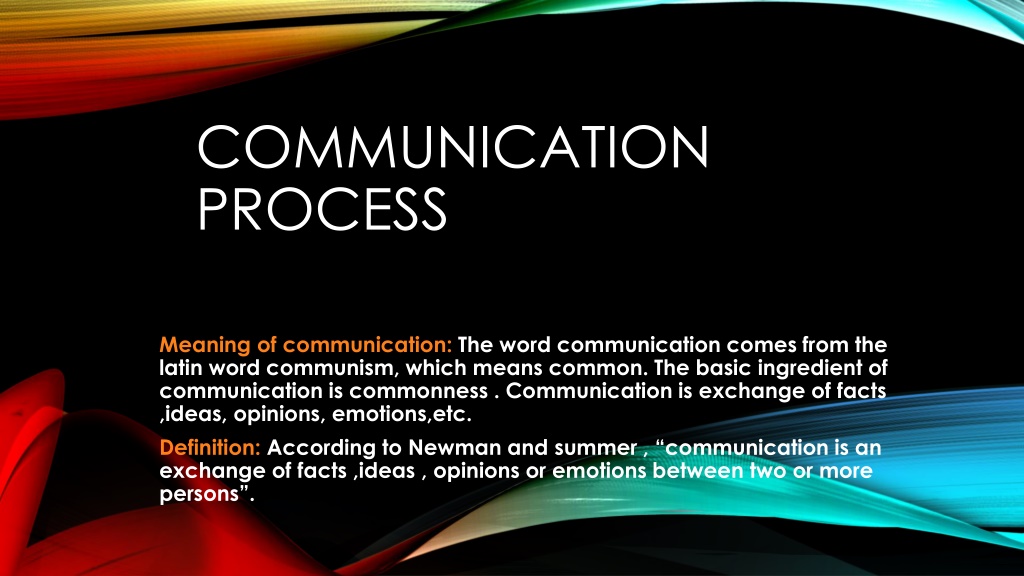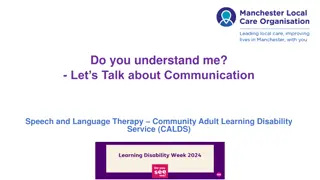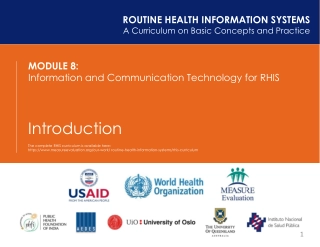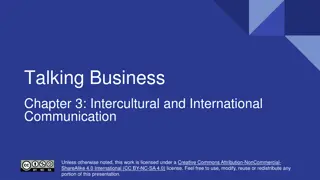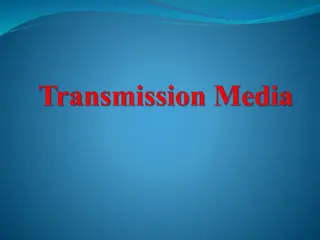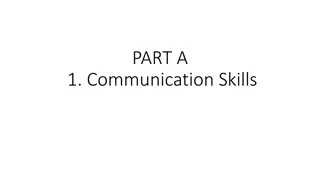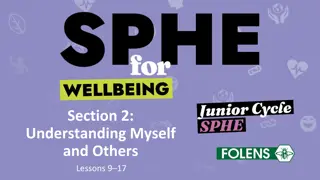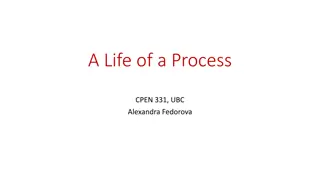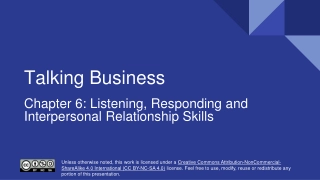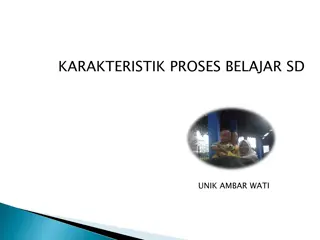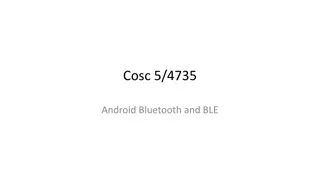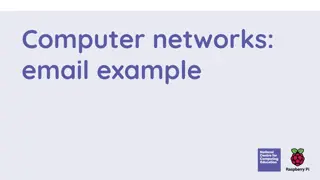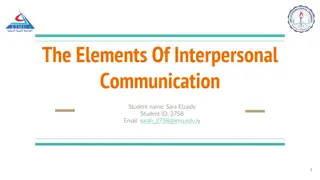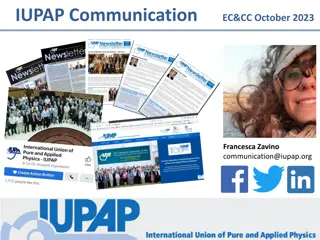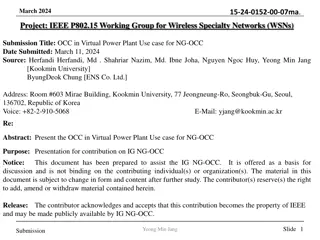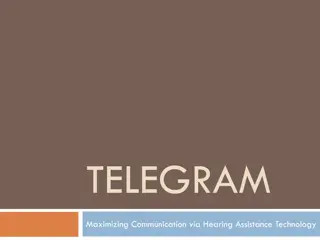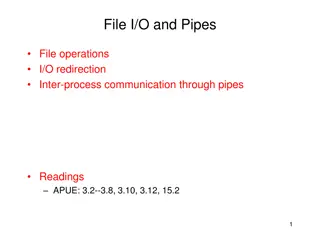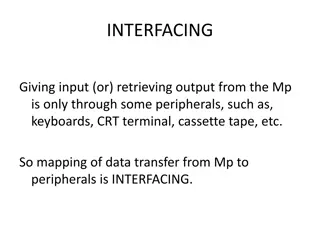Understanding the Communication Process: Key Concepts and Characteristics
Communication is the exchange of information, ideas, and emotions between two or more individuals. It is a process involving a source, encoding of messages, communication channels, receivers, decoding of messages, feedback, and potential noise. Important characteristics include the involvement of at least two persons, the exchange of ideas, the use of words and symbols, mutual understanding, personal and non-personal communication, continuity, and universality.
Download Presentation
Please find below an Image/Link to download the presentation.
The content on the website is provided AS IS for your information and personal use only. It may not be sold, licensed, or shared on other websites without obtaining consent from the author. Download presentation by click this link. If you encounter any issues during the download, it is possible that the publisher has removed the file from their server.
Presentation Transcript
COMMUNICATION PROCESS Meaning of communication: The word communication comes from the latin word communism, which means common. The basic ingredient of communication is commonness . Communication is exchange of facts ,ideas, opinions, emotions,etc. Definition: According to Newman and summer , communication is an exchange of facts ,ideas , opinions or emotions between two or more persons .
CHARACTERISTICS OF COMMUNICATION 1.Two or more persons: The first important characteristics of communication is that there must be atleast two persons because no single individual can have an exchange of ideas with himself 2.Exchange of ideas and information: communication cannot be thought of in the absence of exchange of ideas . 3.Use of words as well as symbols: communication is done not only through words ,but also through signs, symbols, colours and gestures, etc. Different companies use different words and symbols in their communication with audience. 4. Mutual understanding: mutual understanding means the receiver should receive the information in the same sense in which it is being given . 5. personal and non personal communication: It is not always necessary in communication that the receiver and sender of information should be face to face with each other. 6. Continuous process: communication is a continuous process .it is a regular activity like other activities in the business 7. Universal: communication always exists it is universal phenomenon. All living creatures communication through their own symbols and signs.
COMMUNICATION PROCESS 1. Source: source is a person , group of persons, an institution or an organisation who intend to share some message with the receiver or audience. For example, a source could be a salesman who wishes to communicate a sales message or it could be an organisation that wants to send a message to thousands of customers through advertisement. Encoding of message: encoding of message refers to putting thoughts , ideas or information in symbolic form. Sender s goal is to encode the message in such a way that it will be understood by the receiver in the same manner in which it is intended by the sender. Communucation channel/ media: communication channel caries the encoded message from the source to the receiver or Audience. The channel communicating the message can be personal or non-personal . Personal channel of communication refers to delivering message through salesman, while non personal channels of communication refers to mass communication like advertisement, publicity,etc. Reciever/ Target audience: Receiver is the person with whom the sender shares thoughts or information. Receiver is person or group or organisation that receives the message audience is the destination of message . In its absence , process of communication is incomplete. It may be a listener, a reader or a viewer of a message who not only received the message but also understands what is implied in it. 2. 3. 4.
5. Decoding of message : decoding is a mental process by which the receiver draws meaning from the words ,symbols or pictures of message. In decoding process, signs are converted into concepts and ideas. Receiver understands the message through decoding. If the receiver understands the meaning of the words or symbols correctly then this decoding is perfect. 6. Response/ Feedback: Feedback is the receivers response to the message .it is the final link in the Communication process. The sender usually expects feedback from the receiver to know the effectiveness of communication . The sender usually expects feedback by way of spoken comments, written message, smile, eye movement and body movements. 7. Noise:. Anything that interferes with or distorts the message delivery to the target audience is known as noise. Noise reduces the effectiveness of communication process. Noise may occurs while encoding the message , designing the message, transmitting the message or decoding the message. Noise is also caused by external sounds and uncongenial communication environment.
FACTORS AFFECTING MARKETING COMMUNICATION PROCESS 1. Nature of target audience: In marketing communication, target audience may include customers,dealers ,salesman,stockists,etc. Nature of product: if marketing communication is to be done for technical product then technical source ,technical words, signs, symbols, rational appeal; advertising through business magazines,etc. Will be used. Available finance: If more funds are available for marketing communication then costly source,costly media, costly ad- agents can be used. Competing units: while designing communication, source person, media , pictures, appeals,etc. Used by immediate competing business units must be considered. Available of time: If some urgent message is to be communicated then whole communication process will be fast. For example, fast media like newspaper, internet, mobile-phone, will be used for communication. 2. 3. 4. 5.
ROLE /FUNCTIONS / IMPORTANCE OF COMMUNICATION 1. Provides information: communication passes on necessary information to customers, distributors, salesman,suppliers,stockists,etc. It provides information about changes in various elements of marketing mix,Viz . 2. Persuades: Through communication, business unit Persuades the prospective customers to buy the product; convinces the stockiest, dealers to sell our product. 3. Reminds: Business unit reminds the customers to repurchase it s products. Regular communication helps to maintain product awareness in the minds of customers. For this, business units give regular advertisement at frequent intervals. 4. Creates demand: Effective communication creates demand and makes the person s go to the shop and buy the product. Marketing communication highlights the unfulness of the product
5. Promote customers Satisfaction: customers is the core of marketing. Customer satisfaction is key to success. Two way marketing communication with customers is must. It helps to know tastes, likings, disliking, preference, etc. Of customers. 6. Creates Brand preference: Marketing communication is very effective in creating brand preference. Through communication, the product is shown in comparison with competitive brands and unique features of our product are highlighted. 7.Boosts morale of sales force: communication helps to know the problems and difficulties faced by sales force in selling the product. It also helps to know and solve their grievances 8. Helps to face competition: Nowadays, there is very tough competition in the market and customers. Direct communication eliminates middleman between manufacturer and consumers 9. Helps in product planning: product planning refers to decisions regarding type of product to be made , its colour,design,size,packaging,it s name, labelling, after-sale services,etc. 10. Helps in price Determination: price Determination requires information regarding income level of customers, their purchasing capacity, their opinion regarding existing price level of our product, price of competitive products, etc.
THANK YOU SUBJECT : ADVERTISING Class : B. Com 2
